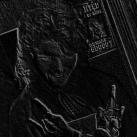Leaderboard
Popular Content
Showing content with the highest reputation on 04/03/2023 in all areas
-
Hi again, ladies and gentlemen. It's a pleasure to me to make yet another spam post for you to value, comment, and listen. Naturally, I come with my next nocturne, composed during March and finished more than a year ago (already!), on 24 March, 2022. It is dedicated to a close friend of mine, David Lozano Leiva, who is also a musician (guitarist, and amateur composer as me). The traditional nocturnal character of this nocturne is as present as it was on my last one, so yeah, close to none but perhaps a bit more than the 7th of this set. Not my best, neither my worst, but I'll leave that judgement to you. As always, any feedback, opinion, comment, greeting, as meaningful or meaningless as you yourself consider it, is very welcome. I'll leave the video here and the mp3/pdf below. Kind regards to you all and thank you in advance, Daniel–Ømicrón. 55 - Nocturno Nº8.pdf2 points
-
Hi @Henry Ng Tsz Kiu, thank you as usual for your supergenerous comments! I have tried to add a bit to the development implementing your suggestion, what do you think? (also corrected the ugly mistake at b. 109-110, thank you!) quartetto 1.mp3 I also have completed the second movement (I'll do a separate thread), which I think could use some serious advice, especially in the middle section!quartetto 1 - Full Score.pdf1 point
-
1 point
-
Since I really enjoy the emotional content of the piece I hope the feedback can help a little bit on that! Usually you write beautiful homphonic music but I am happy to see you write polyphonic ones too!1 point
-
Wowww! Such a detailed feedback including so many details! Hats off to you my friend! I am really grateful to you for pointing these out and I am really glad that you liked the emotional content of this fugue and the modulations! I will correct the things you noted and indeed would be more careful with the voice leading in my future compositions. And yes, the double bass is a bit weak sounding. Maybe I can fix that with some manual mixing. Thank you again for taking the time and doing me such a huge favor 😊1 point
-
Hi @ComposedBySam, I certainly enjoy this fugue! This is very emotional content here instead of cold counterpoints which I love! I have done the same thing in the third movement of my clarinet quintet which is also a slow fugue, by having homophonic sections between those polyphonic sections. I think it is a great device to let listeners rest a little bit haha! I only think the double bass may be quite weak comparing to the other 3 string instruments here. I find the augmented second in the countersubject (e.g. Eb-F# in b.4-5) a little bit weird actually since the sound is not good if no other voices accompany that melodic gesture. I will probably change the Eb to an E natural and change all those similar places as well, even though it will have false relation with the subject but I think this will be better sounding for me. B.7 beat 4 violin should be F natural there? It will again have an augmented with the Eb next to it. In b.15 first two beat I won't have a C trill in the viola since the suspension will be way too long for me. I may just resolve to Bb there. The appearance of the subject in b.17-19 in cello modifies quite many things which may be not strict enough though. In b.19 last three quavers even though there's no parallel fifths there the sound is not too good with the chords in similar motions. Having the violin in contrary motion will be great there! Nice pretension of the stretto in b.22-24! Nice reset in b.27. I love this reset for later modulations! E# should be better in b.35 for the double bass as it's A# minor there. But I think in this section you can just use Cb major, Bb minor and Eb minor instead of B major, A# minor and D# minor to prevent those sharps! P.8 in b.41 btw viola and double bass (A#-B) Your modulation to Eb major is very beautiful through the german sixth! I love it! P.8 in b.43 btw cello and double bass (Eb-F), P.8 btw b.44-45 btw violin and double bass (F-Eb). The A natural in viola seems strange for me unless you want lydian colour here! P.8 in b.46 btw violin, cello and double bass (Bb-Ab) P.8 btw b. 57-58 btw violin and double bass (C-Db). The return to c minor here is again very beautiful. Your modulation is masterful! Very nice ending. Except personally I want to keep it tragic and the picardy third is too bright for me! Thanks for sharing! I know I am nitpicky but I do enjoy this fugue! Henry1 point
-
spammer eh? ... WHAT hmm, it seems like you're special or something...I can't flag you I'm curious about this. Are there relations to guitar with this piece? Or is it just a friendly dedication? Or something different? Well, even though I mentioned your last one felt like less of a nocturne than the others, keep in mind it's a pretty general term. And judging by your constant themes of black and blue and winter and darkness, even putting the site in nightvision, I think the term suits your style with the piano pieces I remember of you BTW, I'm probably guilty of this too, but NEVER say "this isn't my best work". Let us be the arbiter of truth in your musical pursuits; if you taint your own work with pessimism, that's generally what the audience will defer to when listening. To piggy back off of that, I think this piece is brilliant. This doesn't relate to your music, but I think it's kinda funny that tangentially your 8th nocturne reminds me of my 8th prelude in a way. I'm taking a guess, but was this one difficult to put together? I only ask because there's striking differences with the character and flow of it, and I felt like mine had the same dilemma. It took extra effort to pull through with it being a cohesive piece, but then again, maybe I'm just rambling... your nocturnes have far more musicality and development then my little preludes. I remember you mentioned that your nocturnes would get stranger, and I feel like this was perhaps the start of that? Strange of course isn't a bad thing, in fact, it's possibly the best thing that could happen to you. First of all, all the Omicron characteristics are there with this piece, the articulate melody shaping, the drama of the harmony, the clever usage of devices to develop the motivic spots in the music...it's all there. But I really enjoy how you took us on a journey with this piece. You again let rhythm dictate your music, and I love the gothic harmonies involved with shaping this work. I can't help but be reminded how well a live performance would do this justice, especially those 32nd note repeated melody phrases (maybe just notate as a trill?). I actually like the jaunty pacing of your music with this one, how it floats in between a dramatic chorale into the sextuplets of the distinct rhythms that you give us. I'm a huge fan of seeing your music evolve, and even though these are regarded as "older" pieces as you've chosen to post them later than your compositional progress, I'm delighted to hear how they continue to astonish and beckon me to yearn for more. Well crafted work as usual, you've never disappointed. Maybe I'm just an annoying super fan of your style (which is what keeps me coming back for more), but I'm always excited to see recent posts from you. I can't help but notice there's a flurry of activity in reviewing other's works when you post something new. Don't feel guilty bruh 😄 We all dig your stuff1 point
-
I had just been working on the one in D....whoops 😄 hmm yeah good catch, I'll dig into it to make it better. Thanks! Yes! From now on I should just ask for your opinion before I post lol I'm ahead, so three more to go! (though I'm feeling the wear of trying to finish up. I want to finish before taking a break though, this has been keeping my creative juices flowing.) Thanks man, but I still feel like I can do better with engraving. Omicron ending seal of approval. That should be your trademark badge thanks for checking this out Daniel and Henry, I always hope one of you two will stop by when I post1 point
-
Sorry Gospel, I'm very bad at titles, and this case is no exception, but it reminds me of a scene of some guy walking in a park at dusk with his dog barking. Something like this. It is not accurate but I haven't had more time to spend on the AI haha. Both your initial version and the current one give me the same vibe of peacefulness. Decent job to say the least, I liked the final trill very much. Kind regards, Daniel–Ømicrón.1 point
-
Sounds very nice Sam. The video is 👌too! I'm not a fugue expert so my feedback will be limited here. In comparison with other fugues I have had the pleasure to listen here, this one has a significant amount of "rest" sections where the fugal essence is not prominent, yet you are still able to maintain the main motive of the work above, no matter what, and this is something I liked. My only criticism: there are passages where the leading voice gets a bit blurred, so it would be more a balance/equalization problem than a problem of the composition per se. The ending took its time, and I liked that too. Overall another great work to add to my liked videos list! Kind regards, Daniel–Ømicrón.1 point
-
Entry G - "Revisiting Kirby" by @Setthavat Based on track 4 - Kirby's Adventure "Grape Garden"1 point
-
This work shouts maturity in its very first bars. Then it loses a bit of that and then we go to the Cm (Bm?) section which is very beautiful and straight-forward in my opinion. The ending is above some other pieces I have listened here but not your best one, though I liked it anyway. Again you seem to be very careful in regards of the engraving and this is something that you know I value highly, so thanks and congratulations. Perhaps this prelude has some more technical difficulties than the average but it more or less maintains it overall. Depending on the piano (and obviously, the pianist), though, subtle dynamic changes might be more difficult to do, but this is not a inherent problem of the score. Another great prelude I had lots of pleasure enjoying, very different in character than the former one, and somewhat more mature than prior works of this set. Again, congrats. Kind regards, Daniel–Ømicrón.1 point
-
This one is a banger, definitively, and very different in character compared with the previous ones. Can't find anything that I dislike, everything was very well chosen. The 5/4s here and there to emphasize the ending of a certain set of phrases as well as the dynamics and articulation. You also kept the promise you made to keep these preludes easy enough. VERY good job, one of the best up to now if not the best one you have made in my opinion. Kind regards, Daniel–Ømicrón.1 point
-
Works and fits very nicely for a prelude in my opinion. You have a certain idea/pattern and develop it without going too out of it but at the same time varying the chords and melody enough to make it never boring. I would say the others were more meaningful, but this one is definitely as good in terms of musicality in my opinion. The dynamics you put didn't work very good playback-wise but that's not really an issue. Kind regards!!1 point
-
Hey @Thatguy v2.0 @Vince, This is very beautiful for me. Direct emotion is displayed here. I love how you delay the PAC right at the end. You prevent the PAC in b.9 and 11 to go directly to the middle section which is a good treatment of keys. Is that Eb-Cm-Eb here haha! I think this one and no.3 my favourite so far since they are both very expressive. I love you try to be functional and conservative here while retaining your voice with those blue notes. I can definitely feel the emotions behind these notes. I find the clash of Gb and G in b.14 a bit off. You are having the flat submediant there and immediately modulates to C minor with that G note. Maybe retain the Gb or write that with F# will be better? Maybe Adagio molto espressivo will be a good one? My aha moment will be b.28 as it's utterly beautiful there with the contrast of harmony and register there! Thanks so much foe sharing Vince that guy! It's halfway now and looking forward to the finishing line! Henry1 point
-
It would definitely help to be more precise, so I insist on this question. I agree with the issues pointed out above, specially in the "in between" section that occurs just after the ostinato ends and the tuned perc. begins. There were really enjoyable parts in the middle section and I would say I liked those more than the sudden ending section you bring which, despite very powerful, turned out to be too abrupt, dense (but that might not be your fault entirely, since we are not dealing with top-notch sound libraries or a real performance) and unprepared to my taste. All in all, I enjoyed it but I encourage you to consider my mates' comments above regarding directionality (and everything else you might find useful). Kind regards, Daniel–Ømicrón.1 point
-
This is a problem in that overtures are often written after or along with an opera as (in classical/romantic opera at least) they present themes that will occur in the opera itself. If they don't they have to be truly engaging in anticipation of what's to come. They could set a mood frinstance. It would have helped if BipolarComposer told us what the opera was about. In its way it's a nice piece but lacks cohesion.* Thematic material is blurred by polyphonic lines; there are moments of stillness e.g. it seems to stall at 2'10" then meanders on with nothing of consequence until well into the 2'30"s. The sudden "outburst" at 4'06" brought in a baleful episode that came over, like the opening at 0'07", rather dense - but dropped back again at 4'44" when it suddenly came to life. I felt the ending starting roughly at 5'30" came on too strong too early so it wasn't a build-up to any climax. It needs to start quieter (like Ravel does in his Bolero, so by the time he gets to the climax he can just let rip into the final chords). What's difficult about reviewing this piece is whether it's intended to mimic a realistic live performance or is the composer happy with the balance as it is, as a recorded work? As the former there are a few production issues to look at. As the latter, it's an achievement, but to me personally it's a little turgid. I stress that's just my personal view. If you're happy with the work, fine. However, it does have terrific potential if thinned out a bit; scrap unnecessary polyphonic lines where the density is greatest (maybe present the tunes with greater clarity, separately) and review some of the brass writing. A score would have been useful. Is there one? *It's all right. I'm an expert at composing music that just wanders about aimlessly. .1 point
-
Hi @BipolarComposer, I really don't have many to add: I agree with Rich and Peter on the energy and lack of direction of the piece. I think some melodic and rhythmic hooks will certainly make the overture more recognizable! Thanks for sharing! Henry1 point
-
Hi ... a very very 20th century Russian feel to the music. I really enjoyed your orchestration with its laddered scaffolding and colorful texture. Good job!1 point
-
I agree with Rich. The ostinati really give the piece lots of motion, drive and energy. But the melodic content seemed unimportant, not providing enough thematic unity or significance. This gave the piece a lack of direction. Also, possibly because of the aforementioned issues, there weren't really any changes in dynamics in the piece - it would have made the piece much more interesting if there was a build or a regression in dynamics somewhere in the piece. Although there is that middle section with reduced instrumentation which kind of serves as a contrasting section and is softer because of the reduced instrumentation. Thanks for sharing!1 point
-
BP-- I liked the conclusion very much. As for the middle portion--and this is all subjective, of course-- I thought "where is this headed"?. It seemed to lack directionality. Of course, I am prejudiced in this regard. At 4:30 there is an abrupt climax for this section. My thought is a gradual build up to this might solve the directinality issue. An "ah ha!" moment for the listener. Stripping down the orchestration prior to it, or counterpoint with a quickening/stretto...there are of course a dozen ways to do this. Overall, the piece held my interest. A score?...1 point
-
Very interesting concept. I like the disharmony and dissonance. Your orchestration is very good! This "cracked" rhythmic is very expressive.1 point
-
Hi @BipolarComposer, Very funny music here! In 1st mov. the winds pairing up the drums and celesta is nice in the middle section. Though in the ending the naivity is turned to a Stranviskian rite which scares me! i really wish the ending is less forceful here in my opinion to keep the fable beautiful(?) and naive(?). (Yea the Hans Christian Andersen stories are sometimes cruel though) The opening pizzicato is very nice to show the lightness of the ballerina. Piccolo is great used with bassoon, and the flute and oboe combination is very bright. 0:48 is nice (with the glockenspiel?)! Personally I just don't like 1:00 since I think the low register instruments are ruining the scene. The dance becomes more agitated after that with the tremolos and nice comeback of the opening pizzicato! Humorous ending as well! Thanks for sharing and hopefully you will finish the set quickly! Henry1 point
-
Entry F by @ComposaBoi Based on track 1 - "Dragon's Lair" - further explanation provided in the pdf.1 point
-
Entry D - "Grape Garden" by @telliur Based on track 4 - Kirby's Adventure - Grape Garden. Further explanation in the comment pdf.1 point
-
I really like it and I feel it almost has like an impressionistic quality to it. But, I don't think you do a good job ending it. There is no end - it just stops. Also, there isn't really a contrasting section to it. It sounds like it's just a continuous A section with some variations in it. I think you probably think that the middle section in F minor is contrasting, but to me it doesn't sound different enough. Also, it would help to see the score in this case but I don't really think that this piece is in Ab major but in C minor. Whenever you're in the Ab major sections it sounds like you're on a submediant degree of the scale, which leads me to believe that it's actually in C minor without ever actually landing on the tonic chord. I could be wrong though, but it would help to see a score to check that out. It might help to make a contrasting section if you modulated to something not related to Ab major (F minor) or C minor. Thanks for sharing!1 point
-
Hi @Giacomo925, Actually an exact recap. is not necessary as we have seen in lots of Haydn's works the themes in the 2nd subject are re-invented to fit for the arrival of the tonic key. I myself don't like an exact copy and paste as well unless I feel like that's the best way! For me the style of this piece is quite neo-classical: The grammar, phrase structure, mood is classical but with more advanced harmonic chords and progression. The development is great harmonically and your harmonic progression and modulations are mature and effective. I love how you use the new theme in the section and having counterpoints with it, and the interactions and voice change is great. I hope there are material from the exposition as well! Maybe forming a counterpoint using the new theme and the themes from the exposition will be great! The material from the first subject appears in b.72 which is already the close of the development and I hope it appears earlier! The conflict between between Bb and B natural in b.109 and 110 is too strong for me even though I know you are adapting the melodic and harmonic minor at the same time. I may only use the descending scale of the melodic minor in the 2nd violin for this case. A ritenuto at the end will be better than the rit. since this may cause confusion with ritardando (by careless readers!) (Or it's that a ritardando?) Thanks for sharing and hope to see later movements! Henry1 point
-
Hi, There are some lovely melodic moments in the work; however, I feel the flow - the connectivity among the various lines could have a better flow. By the way please post the score for a closer examination/review. Mark1 point
-
It reminds me of Joe Hisaishi, it's a sort platonic neoclassicism I like. If you go that route sometime you may want to explore his film music for Studio Ghibly which is often built out of a quintal basis and triads on top.1 point



.thumb.png.8b5b433a341551e913a34392660bc95b.png)




